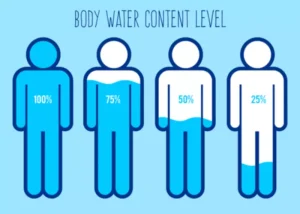Methadone Withdrawal Symptoms and Treatments

Methadone works by specifically targeting a type of opioid receptor known as a mu receptor. A 2009 research review explains the mu receptor appears to be specifically related to the body’s reward process. Methadone, like other opioids, is labeled a Schedule II drug by the Drug Enforcement Administration (DEA), meaning it has a high chance of leading to drug dependency. Even though it can be habit-forming, when used correctly, it can help you overcome more intense drug dependencies.
Partial Hospitalization Programs
It’s often a very helpful and effective treatment for those who need it for this purpose. According to the National Survey on Drug Use and Health (NSDUH), more than 200,000 people in the United States abused methadone in 2016. Methadone is an opioid drug that is approved to treat opioid addiction; however, since it is still a full agonist opioid, it can also be misused. Medically assisted detoxification is one of the best ways to detox. You will get expert treatment from licensed medical and mental health professionals, generally in a hospital setting. Studies have shown that detoxification from methadone is more successful in controlled environments, such as hospitals or special institutions.
Causes of Methadone Withdrawal
Once someone begins misusing methadone, addiction can quickly become possible. Taking more methadone than prescribed and seeking prescriptions from multiple sources are both forms of misuse that can lead to addiction. Addiction robs you of your friends, family, loved ones, health and happiness. The best thing you can do is to call for help as soon as possible. If you make that call now, you can speak with a member of our admissions team, who can help find the best treatment centre for you.

How Long Does Methadone Withdrawal Last?
- But with commitment and a solid plan, you can successfully detox from methadone and continue your recovery journey.
- Our website provides access to information and support for people seeking help.
- There may also be a higher risk of relapse compared to gradual tapering.
- Most clients who have completed methadone detox will transition into an inpatient treatment program.
- Opioids are an addictive group of painkilling drugs that are often prescribed to treat acute pain.
- Reach out to local rehab facilities to explore your choices for medical supervision and support during this challenging process.
Learn more about methadone withdrawal and how to get off methadone safely. Suppose you or someone you’re concerned with is in jail or prison and experiencing methadone withdrawal. In that case, it is critical to seek medical detox attention immediately to ensure safe and effective treatment. Working with healthcare providers to develop a plan for managing addiction and withdrawal symptoms during and after incarceration is also necessary.
- Binding to mu receptors isn’t the only mode of action methadone has in your body.
- Medical detox programs are generally about five to seven days in duration, though this can vary according to the individual.
- Inpatient programs—also called residential programs—offer patients 24-hour medical care, a range of therapeutic interventions, and invaluable life skills training.
- It is important to note that methadone is a synthetic opioid that works like other common opioids.
Guided methadone therapy
Methadone withdrawal can be very uncomfortable and challenging for the patient. Methadone detox can be difficult and should only be undertaken with the guidance and support of medical professionals. Proper medical monitoring and support can help manage withdrawal symptoms and increase the likelihood of a successful detox. Read more about methadone detox, withdrawal management, and relapse prevention. As with any opioid, ending methadone use on your own or quitting cold turkey can cause withdrawal symptoms.
- John C. Umhau, MD, MPH, CPE is board-certified in addiction medicine and preventative medicine.
- The doctor continues the therapy until your body no longer needs methadone at all.
- However, choosing a reputable treatment program and working closely with healthcare providers to ensure safe and effective treatment is necessary.
- Instead, it is recommended to taper off it slowly to lessen the impact of the potential side effects and to minimize relapse.
- Even if you happen to relapse, you should learn from it, make the necessary changes and keep moving forward.
- They specifically looked into how the medication impacted the subjects’ preferences when given the option to either self-administer fentanyl or receive food.
Treatment & Support
The goal is to start with the lowest dosage possible that will minimize drug cravings and withdrawal symptoms. ” We Level Up offers several levels of care to support this process and can be there to help you along every step in your recovery journey. You may experience a protracted withdrawal period or post-acute withdrawal syndrome, in which withdrawal symptoms may persist for weeks or months. Cognitive symptoms, such as difficulty focusing on a task, may also occur. Protracted withdrawal can include emotional symptoms such as anxiety, depression, and constant irritability. During methadone detox, you may experience uncomfortable withdrawal methadone withdrawal symptoms.

Precipitated Withdrawal Methadone

If you Oxford House are currently using methadone or other opioids, it is best to continue with methadone until the end of your pregnancy. However, it is possible that your child will be born with an opioid dependence, which means they will need to detox. Some physicians recommend continuing methadone therapy indefinitely.